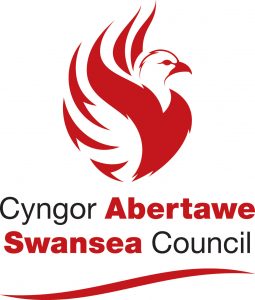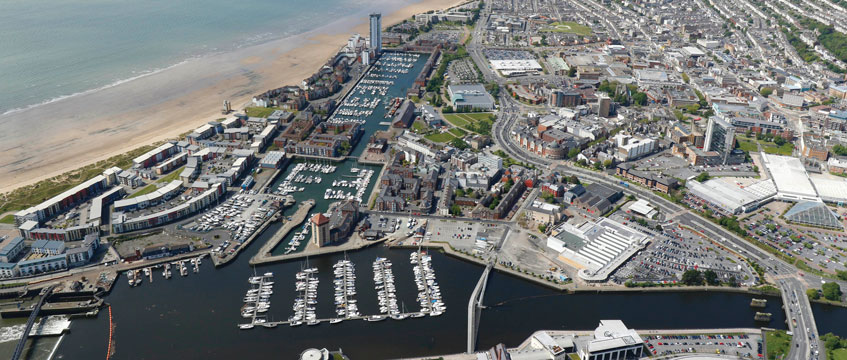The economy may be slowly recovering but there’s no doubt that there are some tough months ahead. Government support schemes are being wound down, and many businesses wound up. But perhaps in local and regional local government, where political leadership appears more assured, there are grounds for optimism. Many local authorities – recognising they can bring together the public and private sectors, creating jobs and places in the process – see the crucial role they can play in the UK’s recovery.
One council already on the front foot is Swansea. In pursuit of a £1bn regeneration of Wales’s second largest city, it is seeking a long-term development partner to help create a vibrant, 24-hour, living, working and leisure destination.
It’s not coming from a standing start either. Over the past five years the council has been planning and preparing, creating a sympathetic planning framework and assembling land. As a result, the project has been able to maintain momentum during the Covid 19 pandemic.

“I want Swansea to come out of this relatively stronger than when we went into it,” says council leader Rob Stewart. “We were just starting the steelwork on our £135m digital arena when it hit, and that is now nearly complete. And we’re starting on the interior work. People returning to work in the city of Swansea as lockdown eases have seen a dramatic change not just on our site, but on the skyline of Swansea, because so many developments have progressed during the Covid lockdown.”
Alongside the 3,500-capacity arena will sit a hotel, restaurants, new homes, two new city centre car parks and an elevated coastal park. The development is on site and due to complete in 2021. And impressive though the new arena will be – complete with a dynamic digital skin – for property development manager Huw Mowbray, “the arena is not the prize – the prize for Swansea is the continued regeneration and things which are to come through this partnership”.
Looking forward, council chief executive Phil Roberts says the city will increasingly focus on connectivity, and “the right digital infrastructure to make sure that the economy can function going forward”, and delivering a sustainable place.
“Building on our green infrastructure and creating a green city centre is incredibly important. We’ve been on a fairly extensive programme of infrastructure and public realm improvement over the last three years to do that. The aim of all this is to tackle the fundamental economic problems and challenges of south west Wales – the main one being productivity. What we want to do is create the right skills and employment opportunities which take advantage of the growth of new technology, in particular, science.”
Leave the car at home
Given those economic challenges, affordability matters too. “Our development strategy offers a once-in-a-lifetime opportunity to increase city-centre living,” says deputy leader Andrea Lewis. So housing needs to offer a strong, affordable element, as does office space through “affordable, flexible commercial space”.
Expect reduced car parking and more provision of active transport too. “We want people to get fitter, walking, cycling and trying to actively encourage them to leave the car at home,” says Lewis.
An ideal partner, says Stewart, is “somebody who can bring expertise to us. Somebody who can bring that assisted commercial edge for us. Somebody who’s prepared to deliver. The main thing that we are interested in is a partner who has the ambition, the creativity, and shares that vision with us in order to develop these sites to enhance Swansea and its environment. What we don’t want to do is to get ourselves into a relationship which doesn’t create things on the ground. And that’s absolutely why we’re seeking a strategic partner who can help unlock those sites”.
The strategy is a regional one and the council is already working with the Welsh government on its plans. Cushman & Wakefield is providing the council with strategic development advice and working on the formal competitive procurement process. The project, labelled “Shaping Swansea”, initially spans seven key sites, totalling 60 acres, ranging in scale from compact sites in the core city centre to strategic sites in gateway locations. The next stage will see the council and its partner identify additional sites suitable for development.
Selection of a partner is expected in summer 2021. What the successful party gets, says Roberts, is “a council that’s not afraid to take risks. There’s a £150m regeneration programme ongoing every year. The council has used its finances wisely and created itself some leeway to allow that to happen. And it’s been quite creative and inventive in the financial models that it’s using. We build our own council houses. We are innovative. But what we do accept is there are some parts of this world we’re better at creating the environment for than actually delivering.”
Digital future
It isn’t confining its search to domestic partners either. “We have also joined in with the DIT in London. We’ve been discussing with them the potential for international partners. And we’ve already had some discussions with some international partners and local domestic partners as well.”
That need to tackle under-lying socio-economic issues in the region requires Swansea to strike the right partnership with the private sector. And what will guide its thinking is a recognition that the solutions to those issues going forward need to be different to those of the past. For Roberts this means “a digital future based on people living in a city centre which had outlived its previous function, had been rebuilt after the war to a retail and a residential pattern which was alien to it and is no longer fit for purpose. Our aim has been to create footfall, be it people who live, work or visit the city centre, and it remains that”.
In partnership with 
To send feedback, e-mail damian.wild@egi.co.uk or tweet @DamianWild or @estatesgazette












